By Crocker Staff
Art Auction Season is here, which means it’s your chance to obtain works from the region’s most distinguished artists. Proceeds from the auctions provide critical funding for the Museum’s exhibitions and education programs. It’s a win for your living room, a win for the Crocker, and a win for our entire community. Typically spirited, in-person affairs, this year’s auctions will be held on Bidsquare, an online bidding platform. To learn how the process works — and to register — click HERE.
We’ve rounded up 14 works (out of the 200+ available) from this year’s Auctions. Each of the artists below are represented in the Crocker’s permanent collection. This year’s auctions are open to everyone. To see all Art Auction works, click HERE and HERE. To see all Big Names, Small Art works click HERE. Keep an eye out on social media and our e-news for more highlights.
(1) Stuart Allen

Bubble No. 5, 2014. Pigment print on rag paper, 23 x 34 in.
Stuart Allen‘s photographs deal with fundamental elements of perception, such as light, time, gravity, and space. His Soap Bubble series focuses on the camera’s ability to record light in a way that is imperceptible to the naked eye. Over time, he has simplified his subjects so the viewer’s attention focuses on the light itself. He writes:
“Within the playful form of a soap bubble, daylight is deconstructed and re-assembled. As a bubble is tossed and turned by the wind, its shape and thickness are constantly changing, creating ephemeral and unpredictable patterns of color. The bubbles, and the photographs which record their brief existence, become a lens through which we witness the complexity of daylight” (Stuart Allen, 2020).
Stuart Allen is represented by JAYJAY and his work is held in institutional and museum collections worldwide. He has completed more than 15 permanent art installations in public and private spaces throughout the U.S. and Canada. In 2003, he produced a solo exhibition of photographs, Dance Lines, in the Crocker’s Historic Ballroom.
(2) Robert Brady
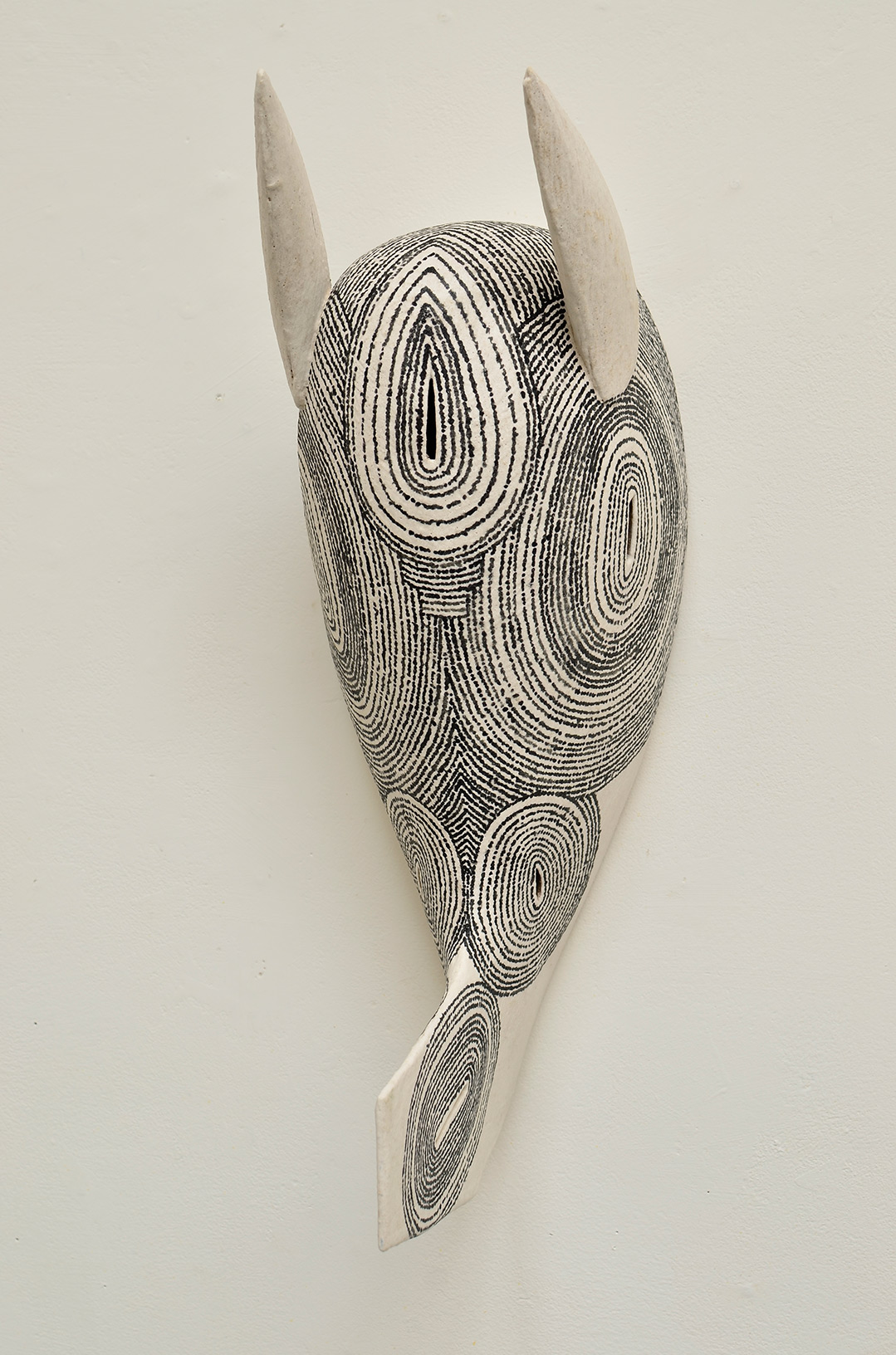
Mask, 2016. Ceramic, 18 x 8 x 9 in.
San Francisco artist Robert Brady has enjoyed a long and successful career. Originally a potter, Brady is also proficient with bronze, paper, and most notably, wood. His sculptures — including ceramic ones — are highly reductive, with an emphasis on spiritual and mythological archetypes. (His nearly life-size, totemic figures are perhaps his best-known works.)
Robert Brady is represented by b. sakata garo. His work is in many museum collections, including those of the Crocker, the di Rosa Center for Contemporary Art, the Los Angeles County Museum of Art, the Oakland Museum of California, and the San Francisco Museum of Modern Art. He taught art at California State University, Sacramento for 33 years.
(3) Mark Bowles
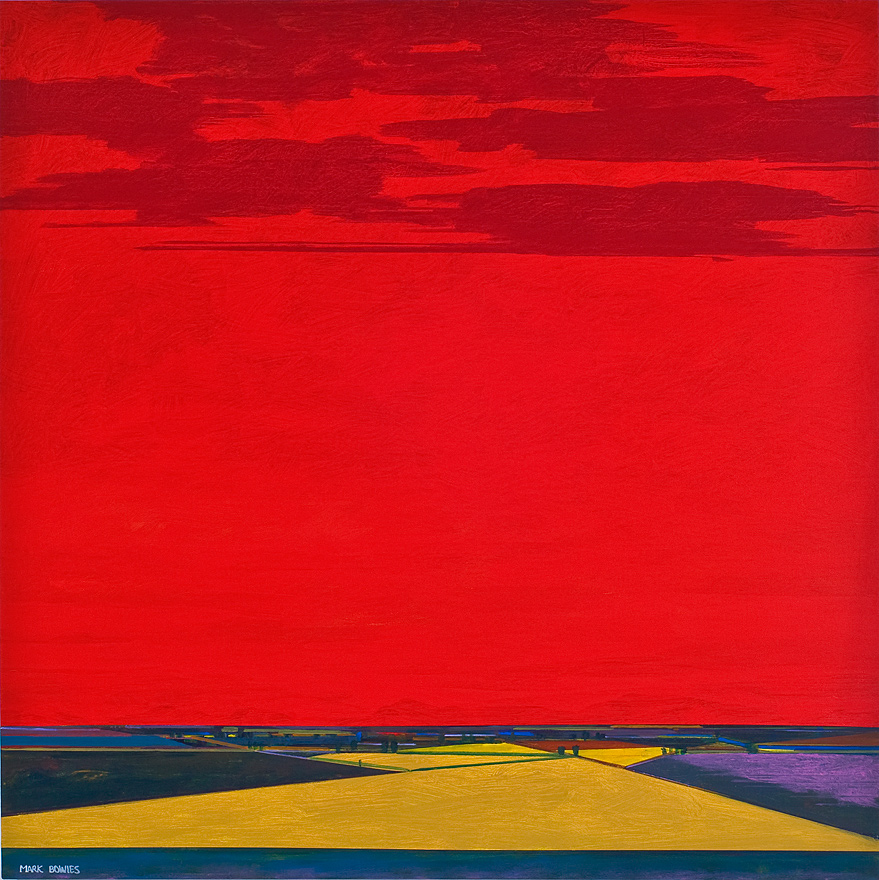
Summertime, 2020. Acrylic on canvas, 48 x 48 in.
Born and raised in the Bay Area, Mark Bowles has always been fascinated by texture, form, and color, which he uses to express himself in everchanging ways. Although he prefers the solitude of his studio, painting infrastructure and color interplay, Bowles’s knowledge of plein air techniques is crucial to his artistic process and is evident in his finished works. Scott A. Shields, the Crocker’s chief curator and associate director describes his works as “individual statements that have emerged with individuality from a rich tradition of California landscape painting.”
Similarly, Jerry N. Smith, Curator of the Phoenix Art Museum, writes “Recent paintings suggest vaguely familiar land masses and agrarian fields of central California, but they are clearly imaginative responses not intended to be read as literal. They balance the familiar with the highly personal. These are not landscapes in a classical sense that ask us to pinpoint a precise location. Instead, we are seeing landscapes of the mind. We are seeing Mark’s responses to his lived experience and his shifting reactions brought on by various sites over time.”
Mark Bowles is represented in galleries in Santa Fe, Houston, Palm Desert, San Francisco, Tucson, and Park City. His work is included in numerous private, corporate, and public collections including those of the Crocker, the Denver Art Museum, the Tucson Museum of Art, Booth Wester Art Museum, and the University of Arizona Museum of Art in Tucson.
(4) Bruce Temuchin Brown
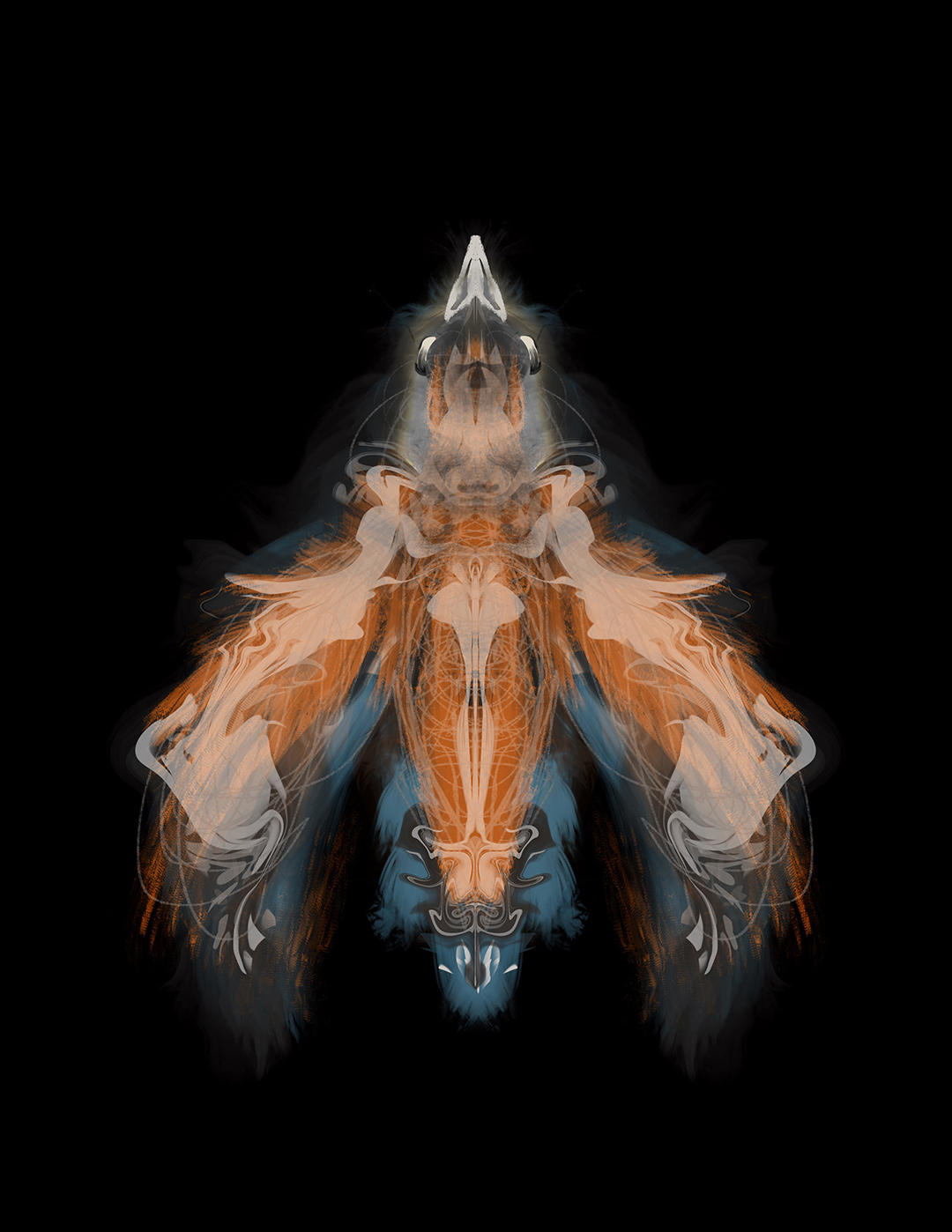
Avian Translucide BTBI, 2019. Digital painting on metalprint. 24 x 20 in.
A commercial photographer and filmmaker, Bruce Temuchin Brown specializes in portraitures of the human condition. This work is part of his Avian Translucide series, a set of “digital paintings inspired by the flight of avian creatures in a translucent state” (Bruce Temuchin Brown, 2020). According to Brown, the paintings “are a cross between an X-ray in motion and a Rorschach test in which every viewer perceives something different hidden in the skeletal structure of the birds.”
Bruce Temuchin Brown’s works are in the collections of the Crocker and the di Rosa Preserve in Napa. His commercial and editorial clients include AT&T Wireless, United Airlines, Black Entertainment Television, McGraw-Hill, Money, Chicago Tribune Sunday Magazine, San Francisco Chronicle Sunday Magazine, and others.
(5) Dean DeCocker
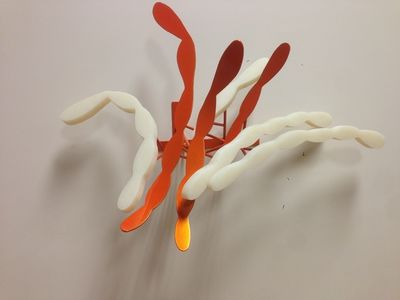
On Palau Island, 2016. Metal, nylon and powder coat, 22 x 22 x 26 x 15 in.
Dean DeCrocker’s work is part of an ongoing series Blue Jackets Return, which transforms flat, two-dimensional surfaces into three-dimensional objects. According DeCrocker, his inspiration comes from everyday objects like mailboxes, aircrafts, heavy machinery, and architectural works.
On the subject of his latest series, he writes, “Recently, my interest in racecar fabrication and finishing and collecting vintage BMX bicycles from the 1970’s has led to subtle changes in structure and color. 2009 has led me to a return to painting. These paintings reflect my preoccupation with stripes” (DeCrocker, 2020).
It’s worth noting for DeCrocker have no substantial meaning or strong relation to the artwork. Fascinated with World War II aircraft, he takes his titles from World War II battles in the South Pacific.
Dean DeCocker is represented by JAYJAY. He is a professor of art at California State University, Stanislaus and his work has been featured in more than 50 solo exhibitions.
(6) Kim Frohsin
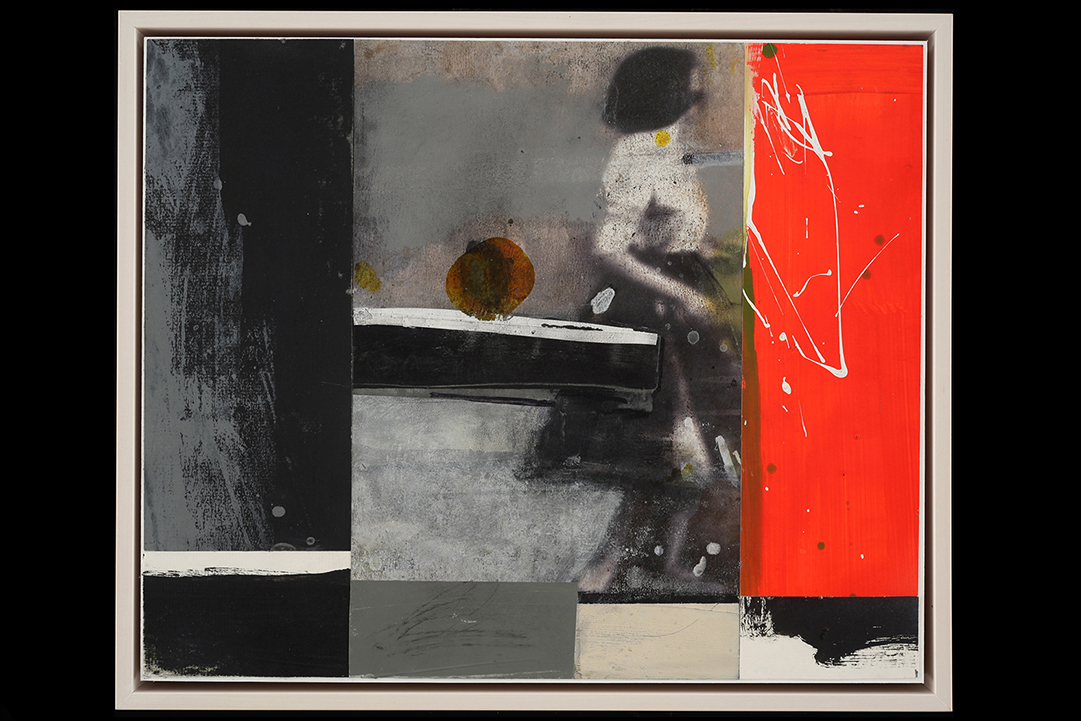
City Street Moves, 2018. Mixed media, 10 x 12 in.
Since the early 1950s, when Bay Area artists like David Park, Elmer Bischoff, and Richard Diebenkorn began returning to representational motifs, California artists have pursued abstract depictions of the human figure. Few have done so with the consistency of Kim Frohsin.
Originally from Atlanta, Georgia, Frohsin studied at San Diego State University, the Aix-en-Provence in France, and at the Academy of Art College in San Francisco. Much of her inspiration comes from figures, some nude and some clothed; some outdoors and some not. Flat and patterned, Frohsin's figures often become one with their environment.
Kim Frohsin is represented by Andra Norris Gallery. Her work can be found in the permanent collections of the Crocker, the Crystal Bridges Museum of American Art, and the San José Museum of Art.
(7) Anne Gregory
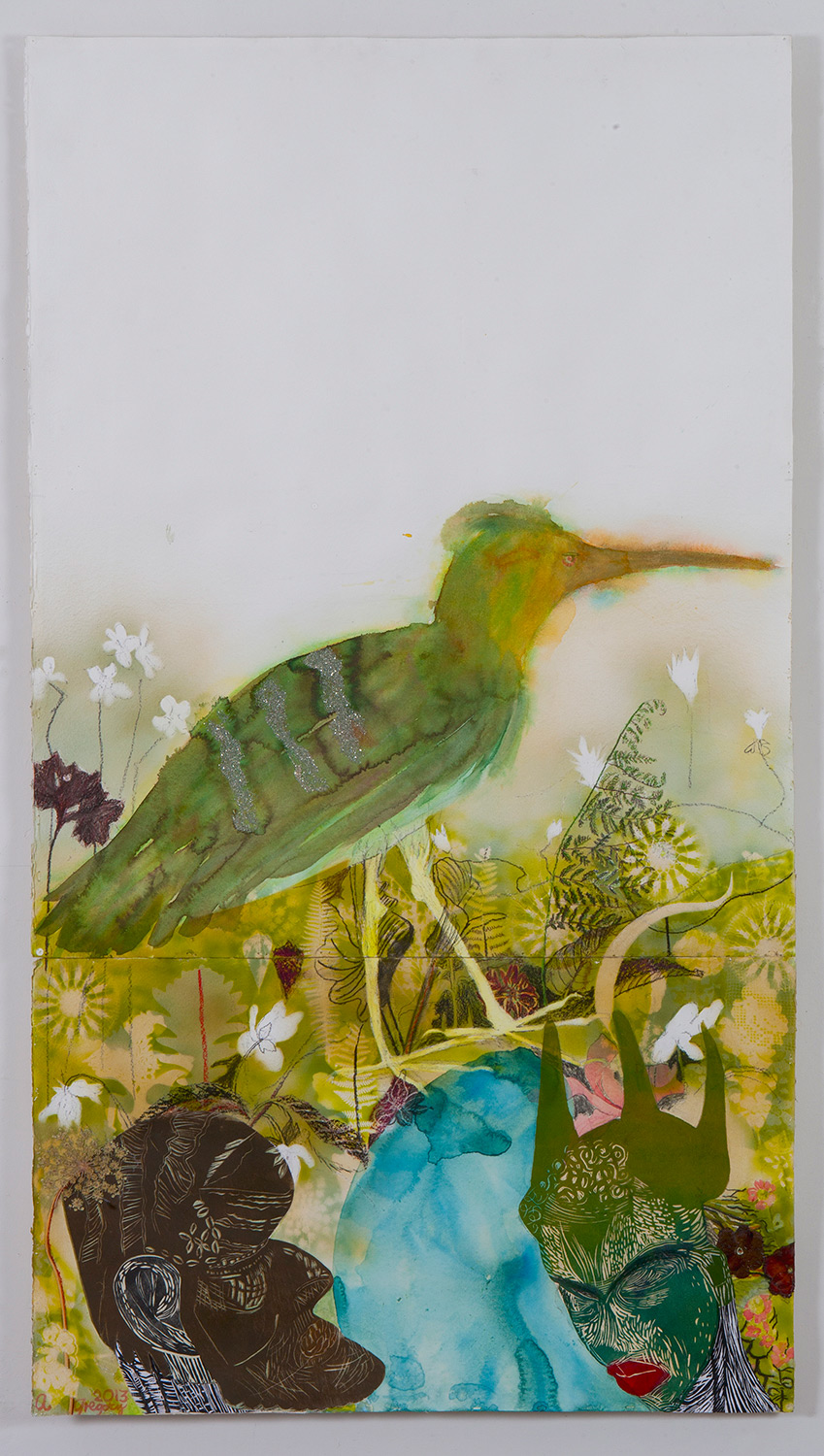
Green Heron, 2013. Mixed media, 68 x 38 in.
Anne Gregory’s seemingly effortless collages are the results of extended sketching trips to zoos, parks, and museums, as well as hours of research. Each one is multidimensional and includes found objects, which give the work an additional tactile component.
Gregory is represented by JAYJAY. She received her MFA from the University of Iowa and has taught at Sacramento City College for 27 years. Her work is held in numerous collections.
(8) Daniel Kasser
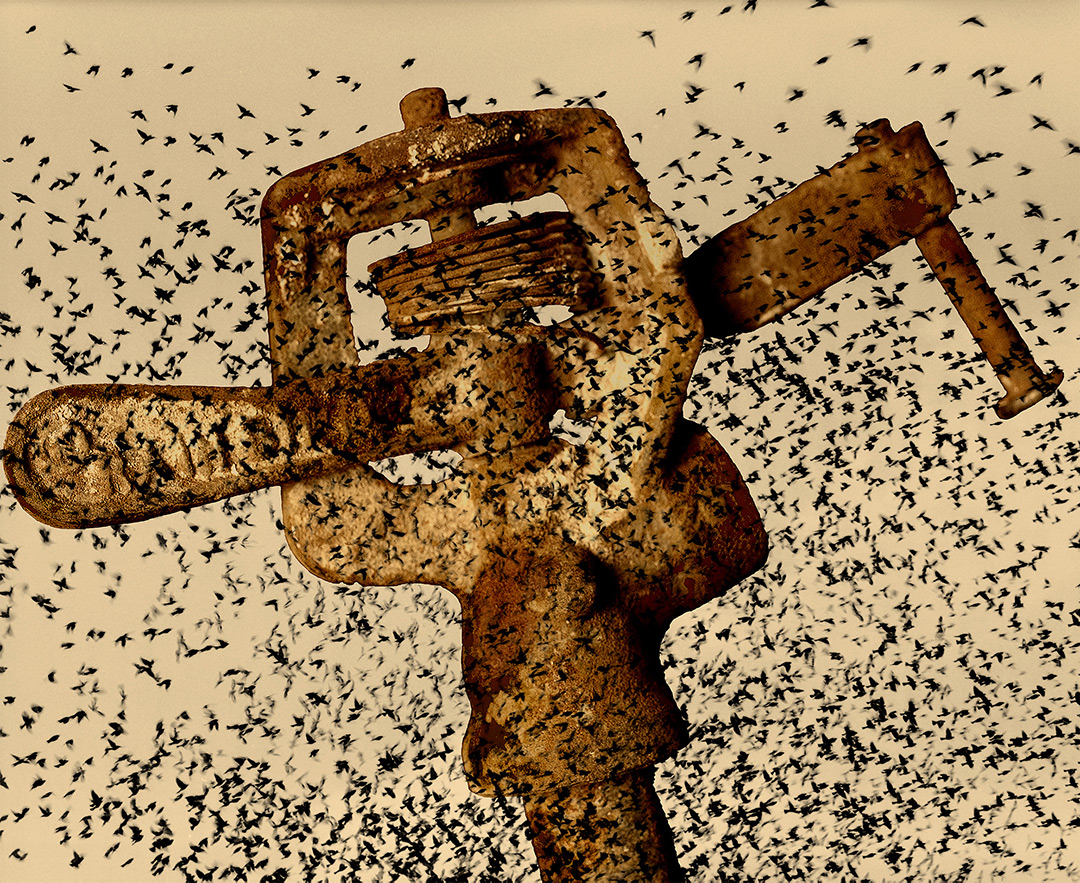
Rain Birds: A Parable of Technology, 2018. Photograph, 20 x 24 in.
A self-described “regionalist photographer”, Daniel Kasser’s work is rooted in his formative experiences in Southern California and his education in Northern California and New Mexico. Kasser has always had a proclivity for the industrial arts, as well as the cultural, environmental, and technological transformation of the American West, interests which are often present in his work. His images are not previsualized photographs. Rather, they are mythopoeic interpretations of the contemporary Western landscape.
Kasser currently serves as a Professor Emeritus in the art and graphic design department at the University of the Pacific where he taught for 35 years. His photographs are represented in several public and private collections around the country, including the Crocker Art Museum’s.
(9) Pat Mahony
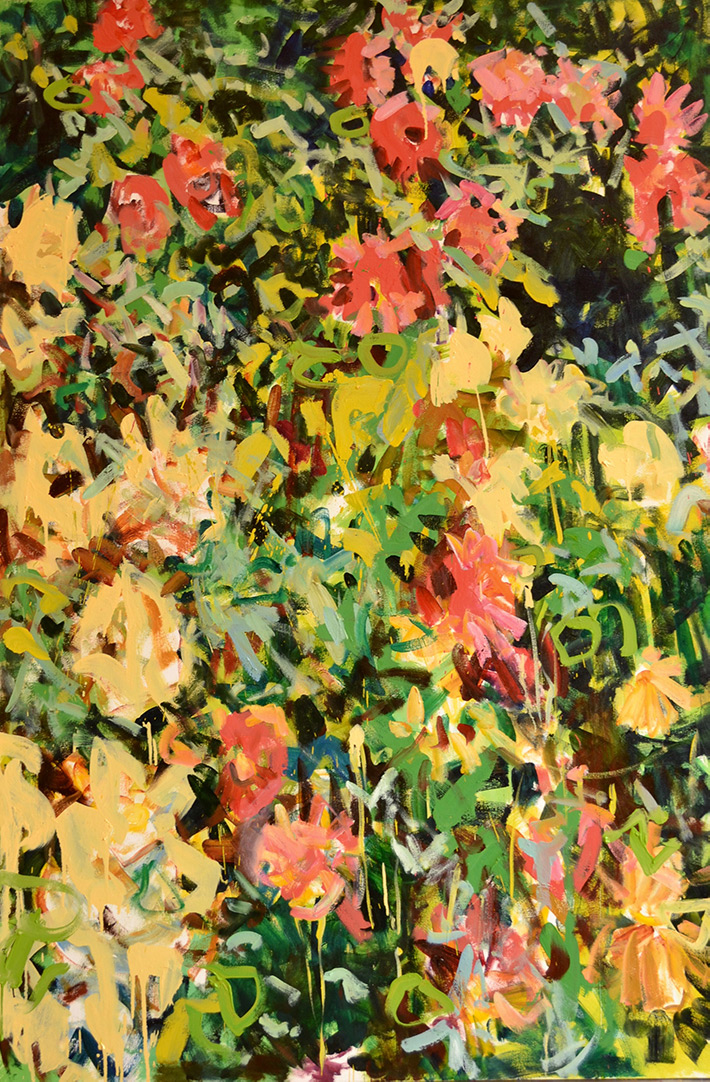
Dahlias, 2020. Oil on canvas, 60 x 40 in.
A life-long California resident, Pat Mahony’s lush, abstracted paintings are the result of years of studying the characteristics of light. Her decision to move from East Sacramento to the Garden Highway in 1988 significantly impacted her work. It was then that she began to “capture the river landscapes and local farmland visible from her studio”, instead of cityscapes (John Natsoulas Gallery, 2020). During that time her light studies began in earnest, as she compared the visual effects of the Sacramento Valley light to that of Southern France, Spain, New Mexico, and the California Coast. These latter works have an “ethereal, but authentic, ambiance” to them.
Pat Mahony is represented by John Natsoulas Gallery. Her work can be found in the permanent collection of the Crocker Art Museum, the Springfield Art Museum, and the Nevada Museum of Art.
(10) Mel Prest
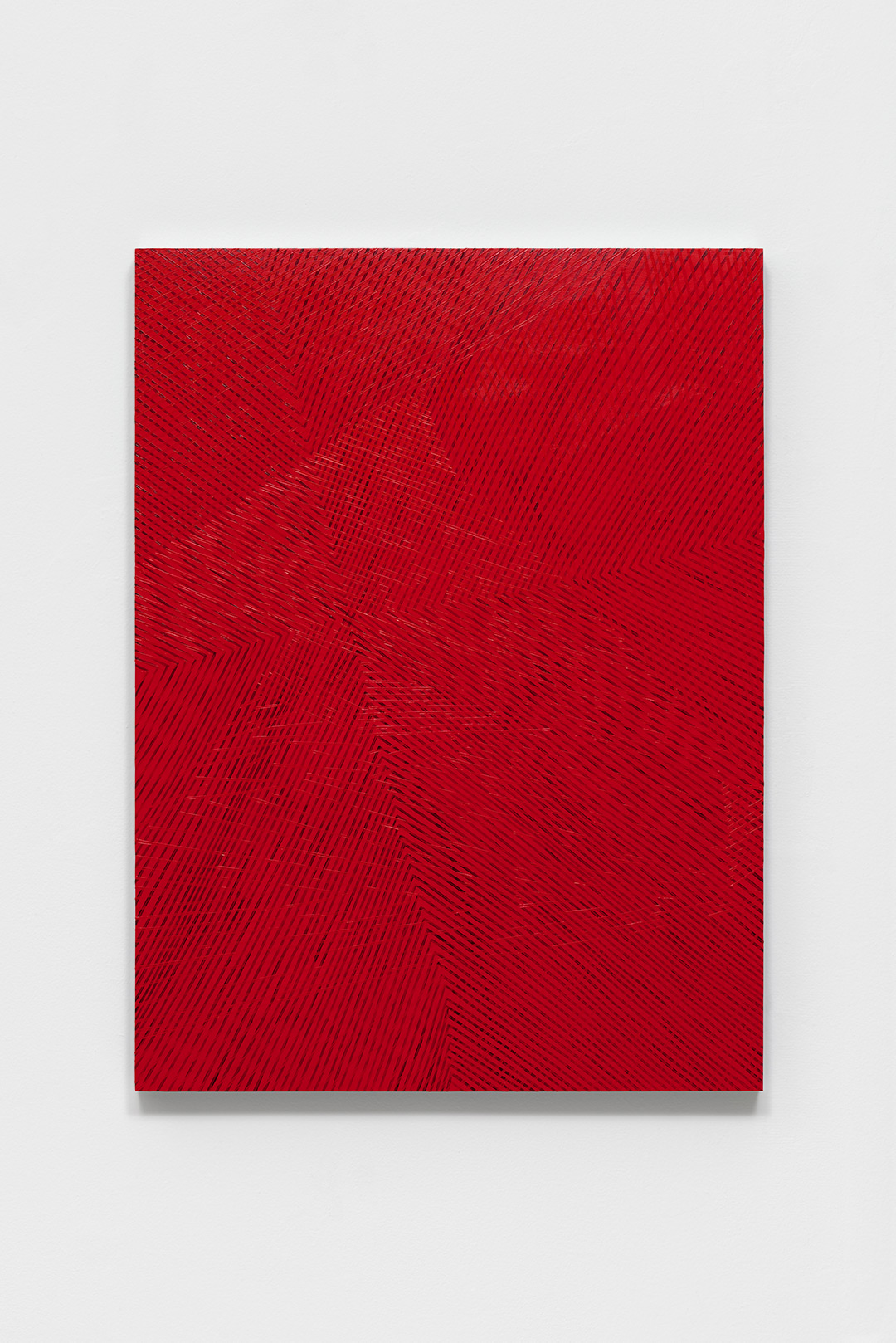
Wassaic Tree, 2016. Acrylic on panel, 40 x 30 x 2 in.
Non-objective painter Mel Prest focuses on color and perceptual visual relationships in her paintings. From afar, each one looks like a single, solid color field. However, a closer viewing reveals multiple, converging stripes of color. Prest’s paintings are not a mere academic exercise. Rather, she strives to invoke a certain scent, feeling, or even memory with each one. For example, her ongoing body of work, Lilac Aura, was inspired by night blooming flowers in upstate New York.
She reminisces: “Lilacs were in bloom and their high, tickling fragrance was often present, almost like a shape or form that one could flow through. I was on a residency and I’d end my workday around 2 AM walking alone across the tiny hamlet, quiet and dark. These large color paintings are atmospheric and were inspired by the feeling of outdoor shape-spaces as they responded to temperatures and weather.”
Mel Prest is represented by b. sakata garo. Her work is included in the collections of the Crocker Art Museum, the Berkeley Art Museum and Pacific Film Archive, the Mills College Art Museum, and Apple.
(11) Juan Carlos Quintana

Wet and Dry Foot, 2017. Oil on canvas, 40 x 30 in.
Juan Carlos Quintana’s work is informed by his Cuban roots and upbringing in Louisiana’s rich mixture of African, European, and Native American cultures. He compares his work to “hybrid dishes”, saying “I always ate both gumbo and ajiaco and appreciated not only the uniqueness of the dishes, but also how they can be improvised with whatever is in the kitchen. Similar to how I make a painting.”
Quintana’s work is simultaneously funny and disturbing. The self-described cynic described his motivation behind his work thusly: “I wish to memorialize a moment in time where we are bearing witness to the hubris, incompetence, arrogance, folly, and violence, in a culture that emboldens racist hate groups and xenophobic attitudes. While the powers that be fervently gaslight the populace, any sense of reason is thrown out the window.”
Juan Carlos Quintana is represented by Jack Fischer Gallery. His work can be found in the permanent collection of the Crocker Art Museum. He was selected for the 2020 Joan Mitchell Foundation artist in residence program.
(12) Richard Satava

Moon Jellyfish Seascape, 2019. Glass, 12 x 7 x 4 in.
Richard Satava’s glass works are based on nature, a decision rooted in his art nouveau background. Over the years, Satava has moved away from art nouveau to pictorial scenes, like the Harvest Moons, Mt. Shasta, and Native American drawings. After a visit to the Monterey Bay Aquarium in the 1990s, he turned his attention to ocean life — specifically jellyfish. The Moon Jellyfish series, which is still being produced today, is one of his most successful creations and has been sold all over the world.
Satava’s work in included in numerous public and private collections, including the Crocker Art Museum, The McConnell Foundation, the Corning Museum of Glass, and The James Della Collection.
(13) Barbara Takenaga

Falling (blue concentrate), 2017. Color etching with hand-coloring, 20 x 18 in.
Barbara Takenaga’s paintings pulses with energy. For many viewers, her paintings have an almost shamanistic nature, each one inviting the viewer to look outward to the night sky and inward to the infinite possibilities of choice. However, her process is anything but speculative.
The inspiration for her works is very much rooted in her small, Nebraska hometown, Japanese heritage, and longtime fascination with Indian mandalas. Each stroke is an improvisational reaction to the “splashy, faux-Abstract Expressionist grounds” made with “very freely manipulated paint, applied with much preconception” (Hyperallergic, 2013).
A 2020 recipient of the John Simon Guggenheim Fellowship, Barbara Takenaga is represented by DC Moore Gallery. She lives and works in New York.
(14) Mark Dean Veca
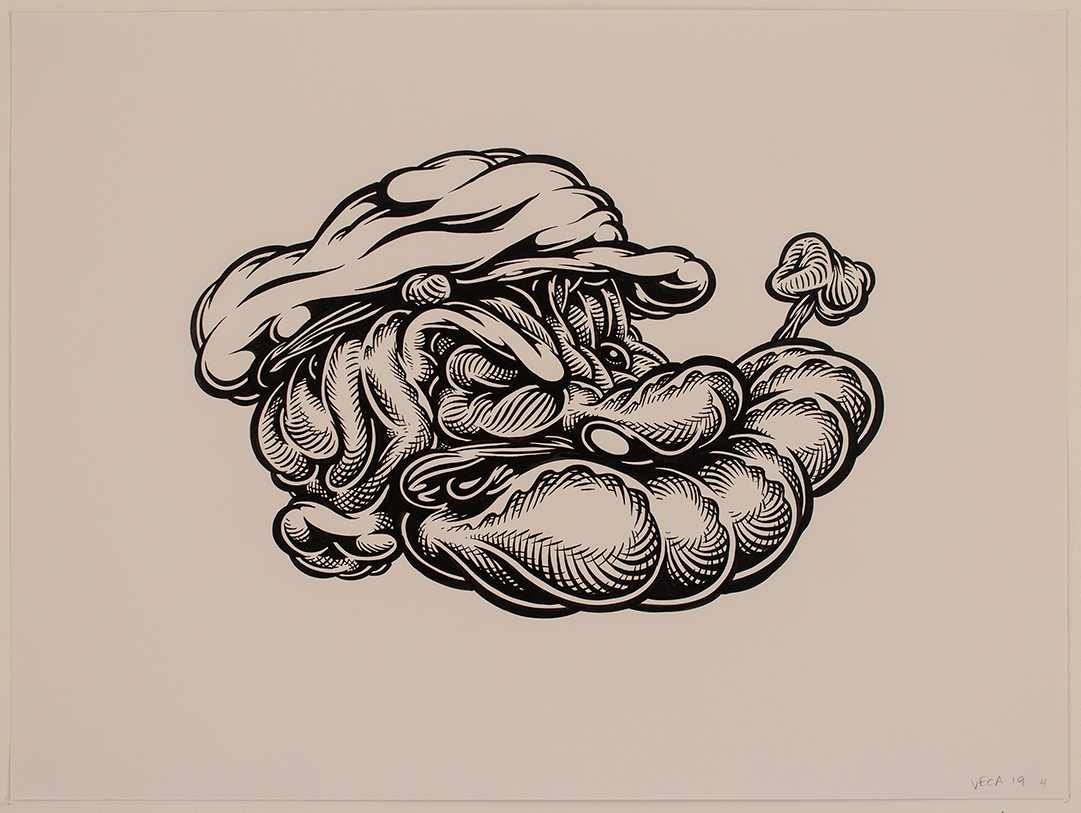
Popeye No. 4, 2019. India ink on paper, 18 x 24 in.
Born in Louisiana to musician parents, Mark Dean Veca attributes the improvisational nature of his free-hand linework to jazz music. The thick, black lines and graphic quality of his compositions are inspired by a range of interests, including the work of Dutch artist M.C. Escher, underground comics and graphic novels, and 18th-century wall treatments like French Toile (Toile du Jouy). He combines those elements with pop culture iconography to create large-scale, immersive, and psychedelic environments.
Mark Dean Veca was a recipient of the Crocker Art Museum’s John S. Knudsen Endowment Prize and is in the Crocker’s permanent collection among other public collections. He has been commissioned to create a major new work of permanent public art for the Los Angeles Metro station at Wilshire Boulevard and La Brea Avenue, opening in 2023.
Top image: Falling (blue concentrate), 2017. Color etching with hand-coloring, 20 x 18 in.


